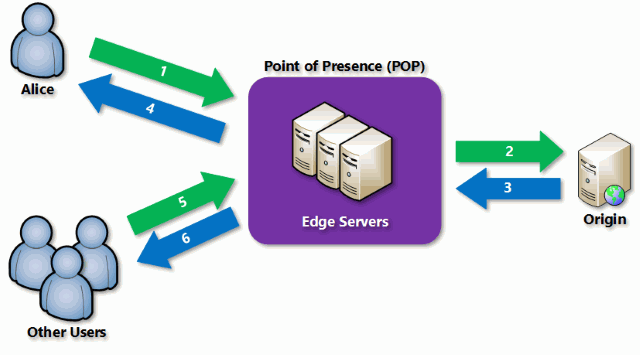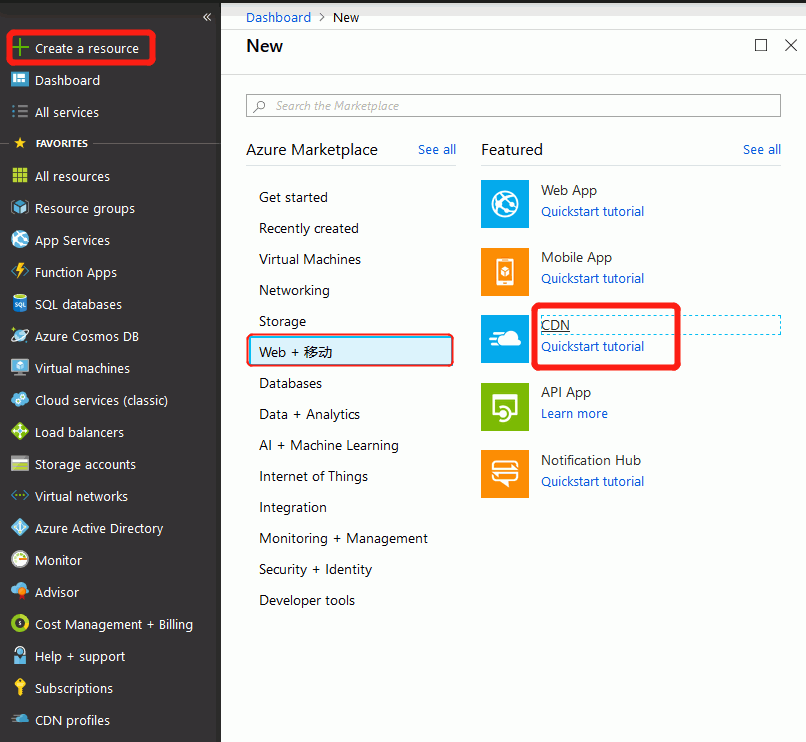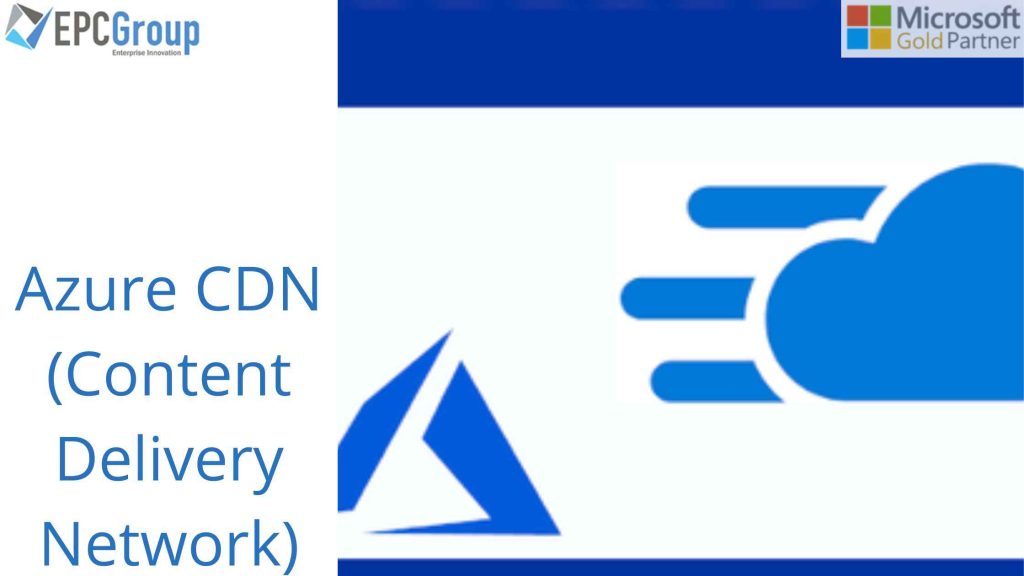When it comes to delivering high-bandwidth content, the Microsoft Azure CDN Content Delivery Network is a great choice. Using this service, you can cache publicly available objects loaded from Azure blob storage, web applications, virtual machines, application folders, or any other location.
In addition, the CDN provides dynamic materials, like a PDF report or a graph depending on predefined inputs, and static content, such as photos, style sheets, documents, files, client-side scripts, and HTML pages.
The incredible things the internet can now achieve were not initially intended for it. An organization that distributes online material to users depending on their location and the page’s origin is described by the term content delivery network (CDN). A large amount of Internet traffic worldwide is carried via CDNs.
The Microsoft Azure CDN (Content Delivery Network) service is well recognized for reducing latency, speeding up load times, and enhancing the user experience for dynamic websites and online apps. The development of this service has made the integration of media processes simple and effective. However, this is just the start of the Content Delivery Network.
How To Configure DNS Caching With Azure CDN
The DNS directs the request to the Point-of-Presence (POP) that offers excellent performance. This process is often the POP that is situated nearest to the user. Next, the file is requested from the origin, which might be an Azure Web App, Azure Cloud Service, Azure Storage account, or any other publicly available web server if the edge servers in the POP do not already have it in their cache.
Optional HTTP headers defining the file’s Time-to-Live are returned with the file by the origin to the edge server (TTL). When Alice (in this scenario) requests this file, the edge server gives it to her below. The file remains cached on that edge server until its TTL expires. If no TTL was specified by either end of this exchange, then a seven-day default is used. Additional users may then request this same file using that same URL and be directed to that exact POP location for delivery of content or other files such as images or videos (depending on the type of content requested).

Azure CDN and Its Role in Caching Website Content
Azure CDN is a globally spread network of data centers Edge Nodes that caches content at locations around the world. End users who are far from the target content source or if there are several intermediary nodes between them and the material can receive it thanks to Azure’s caching functionality.
The Azure CDN provides developers with a worldwide option for delivering high-bandwidth content by caching the material in many places. Azure’s caching functionality aids in:
- For end consumers who are far from the destination content source or if there are several intermediary nodes between them and the content, better performance and user experience are provided.
- The capacity to scale to manage sudden high demand and load.
- We are caching CDN-sourced website content such as scripts, pictures, and web pages.
- Enables caching of items given by an Azure cloud service to the CDN.

Azure CDN Features That Make It Most Useful
- Expand your reach with the content delivery network
A content delivery network (CDN) is a system that distributes content from one location to another. Suppose you’re interested in expanding your reach with your customers. In that case, a CDN can help you deliver your content through multiple servers across the globe, reducing latency and improving performance for all users.
CDNs operate smoothly with Azure services, including Web Apps, Media Services, Storage, and Cloud Services. It is especially beneficial when you want to simultaneously offer your customers access to the same content from different locations.
- Load Balancing and Traffic Spikes
When launching a product, it can be easy to think about how you could lose money. But what if your company didn’t have to worry about infrastructure costs or capacity concerns? What if its customers didn’t have to wait longer than they had to for their pages to load?
That’s where CDN quickly steps in. CDN is a distributed global network that provides high-speed delivery of your content in real-time, without any infrastructure costs or capacity concerns.
- Availability and Performance
Azure APIs and developer tools provide the performance, dependability, and security required for quickly developing worldwide applications. Nevertheless, these APIs allow users to tailor features for availability and performance.
Azure provides a variety of solutions to meet your needs. The first is a set of APIs that allows you to leverage Azure services in your applications. These include computing, storage, network services, and other managed services such as SQL Database and Mobile Services.
- It allows for lowering security threats.
With Azure CDN, you can lessen security risks on the content distribution network, such as distributed denial-of-service attacks. Additionally, you may improve security by enabling HTTPS for your domain names without incurring any extra fees or managing certificates. This process uses Azure Web Sites as an origin server for protected content. This way, you don’t need to implement additional security measures on your servers.
- Pragmatic Content Delivery Network Expert
Using a variety of providers, you can design and customize your content distribution strategy in Azure CDN. Additionally, CDN integrates with Verizon and Akamai services, allowing clients to select the best solution for their requirements. For instance, to balance the load among content delivery networks.
Azure CDN offers different pricing models suitable for different types of customers. You can choose between the minor basic plan, which provides 1 GB per month of storage space and unlimited bandwidth usage. There are also more extensive plans available that offer higher storage space and bandwidth limits.
- Analytics For Caching Asset Delivery
You may track user interaction with the material to learn more about customer processes and organizational needs. Additionally, you can comprehend how clients get cache assets. And how it uses precise and real-time analytics to track traffic on the content delivery network.
Analytics For Caching Asset Delivery is an advanced solution that helps you to monitor your CDN performance in real-time and provides insights into the customer’s experience. For example, you can track the number of requests for data from your website and analyze them based on parameters like geographical location and device type. Moreover, you can also check out how well you delivered your content to users on their devices.
Critical Metrics For Evaluating Azure Content Delivery Networks
Some key metrics are to consider when evaluating a content delivery network (CDN) for performance.
- The first is the connection time—ensuring that CDN has the best network connectivity with minimal latency and packet loss, even under peak usage.
- Wait time is next on our list of metrics. The wait time is the time it takes to deliver the content from the CDN to the requesting node—the less, the better.
- Throughput is also essential, as it ensures that the overall throughput of the CDN is higher than the origin.
- Finally, caching is an essential factor to consider when evaluating CDNs for performance. Monitor overall Cache Hits and Misses
EPC Group for consulting in Azure Services
The bottom line is that the Azure Content Delivery Network is vastly improved over traditional CDN solutions. It’s cheap and reliable; you should consider it if you’re not using it. What’s more, Microsoft backs the Azure CDN with 99.9% uptime, which is better than most other vendors. You can’t go wrong with the Azure Content Delivery Network if you need to improve your content delivery capabilities. If you are looking to offload routine tasks and want Azure consultants who understand the platform, EPC Group is here to help. Visit us today to discover more about how our Microsoft Azure consulting services can help your business!










